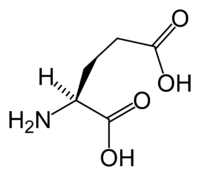
Photo from wikipedia
SUMMARY Retinal waves, the spontaneous patterned neural activities propagating among developing retinal ganglion cells (RGCs), instruct the activity-dependent refinement of visuotopic maps. Although it is known that the wave is… Click to show full abstract
SUMMARY Retinal waves, the spontaneous patterned neural activities propagating among developing retinal ganglion cells (RGCs), instruct the activity-dependent refinement of visuotopic maps. Although it is known that the wave is initiated successively by amacrine cells and bipolar cells, the behavior and function of glia in retinal waves remain unclear. Using multiple in vivo methods in larval zebrafish, we found that Müller glial cells (MGCs) display wave-like spontaneous activities, which start at MGC processes within the inner plexiform layer, vertically spread to their somata and endfeet, and horizontally propagate into neighboring MGCs. MGC waves depend on glutamatergic signaling derived from bipolar cells. Moreover, MGCs express both glia-specific glutamate transporters and the AMPA subtype of glutamate receptors. The AMPA receptors mediate MGC calcium activities during retinal waves, whereas the glutamate transporters modulate the occurrence of retinal waves. Thus, MGCs can sense and regulate retinal waves via AMPA receptors and glutamate transporters, respectively.
Journal Title: Cell reports
Year Published: 2019
Link to full text (if available)
Share on Social Media: Sign Up to like & get
recommendations!